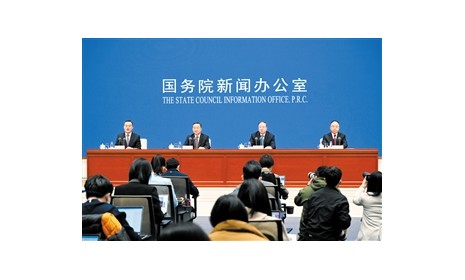食品伙伴网报道,据美国食品安全网8月5日消息,密西西比大学受美国环保组织环境工作组(EWG)的委托而进行的新的实验室检测结果表明,40%的来自各大知名商业机构的收据小票上有高浓度的双酚A存在。其中包括:麦当劳的销售点、CVS超市、KFC、美国全食(Whole Foods)超市、沃尔玛超市、喜互惠(Safeway)超市以及美国邮政。而来自塔吉特(Target)超市、星巴克、以及其他重要企业的收据小票上的没有或者只含微量的双酚A。
不过EWG也指出,即使是同一家连锁企业,不同分店的收据含双酚A量也有很大差别。例如马里兰州一家肯德基收据双酚A含量高达10.62毫克,但在艾奥瓦另一家分店的收据只含0.0001毫克。报告指出,这是由于分店使用不同的感热纸,部分生产商致力制造不含双酚A的感热纸。
在本次测试中收据小票上的双酚A为我们最近讨论的来自罐头食品、奶瓶和婴儿奶粉的250-1000倍。环境工作组认为这些数据不代表决策者们所关注的焦点应该从食品中的双酚A转移到收据小票上,如果零售商们不使用含有BPA的热敏纸就可以了。
据悉,7月11日由瑞士苏黎世的科学家发表的研究结果表明,BPA很容易从收据上转移到皮肤上,并且很容易被皮肤吸收。该研究提出了BPA这种化学品很可能直接透过皮肤而进入血液。
环境工作组已与位于威斯康兴州的美国最大的热敏纸生产商取得联系,他们所生产的热敏纸上存在BPA,该小组要求他们为了他们雇员和消费者的健康利益,不再生产含有BPA的热敏纸。
食品伙伴网编者注:双酚A是世界上使用最广泛的工业化合物之一,主要用作生产聚碳酸酯塑料和环氧树脂。双酚A在生活中应用广泛,是人们经常能接触到的物质。资料表明,双酚A属低毒性化学物。动物试验发现双酚A有模拟雌激素的效果,即使很低的剂量也能使动物产生雌性早熟、精子数下降、前列腺增长等作用。此外,有资料显示双酚A 具有一定的胚胎毒性和致畸性,可明显增加动物卵巢癌、前列腺癌、白血病等癌症的发生。有研究表明双酚A并不是人类致癌危险因素。目前,虽然一些研究结果提示,塑料奶瓶等塑料制品中的双酚A可能会影响婴幼儿的成长发育,并对儿童大脑和性器官造成损伤,但是迄今未有充足证据证明婴儿或者儿童因摄取PC奶瓶释放的双酚A成分而受到伤害。
本报道由食品伙伴网编译整理,仅供食品行业相关人士参考,详细内容以国外原文报道为准。
原文地址:http://www.foodsafetynews.com/2010/08/according-to-new-laboratory-tests/
原文报道:
High Levels of BPA on Receipts
by Alexa Nemeth | Aug 05, 2010
According to new laboratory tests commissioned by the Environmental Working Group (EWG), high levels of BPA have been found on 40 percent of receipts sampled from major businesses including outlets of McDonald's, CVS, KFC, Whole Foods, WalMart, Safeway and the U.S. Postal Service. Receipts from Target, Starbucks, Bank of America ATMs and other important enterprises were BPA-free or contained only trace amounts.
Bisphenol A (BPA) is a chemical building block that is used primarily to make polycarbonate plastic and epoxy resins. Polycarbonate plastic is a lightweight, high-performance plastic that possesses a unique balance of toughness, optical clarity, high heat resistance, and excellent electrical resistance. Because of these attributes, polycarbonate is used in a wide variety of common products including digital media (e.g., CDs, DVDs), electrical and electronic equipment, automobiles, sports safety equipment, reusable food and drink containers, and many other products.
The amounts of BPA on the tested receipts were 250 to 1,000 times greater than more commonly discussed sources of BPA such as canned foods, baby bottles, and infant formula.
The Environmental Working Group does not believe these data should be interpreted to suggest that policymakers shift their focus from BPA contamination of food, which is widespread, to receipts. The group asserts, however, this route of exposure is easy to fix since many retailers do not use BPA-laden thermal paper.
The Environmental Working Group collected receipts from different businesses in 7 states and the District of Columbia and had them tested by the University of Missouri Division of Biological Sciences.
The lab conducted wipe tests in which BPA was easily removed, indicating that the chemical could rub off on the hands of the person handling the receipt.
A study published July 11 by scientists with the Official Food Control Authority of the Canton of Zurich in Switzerland found that BPA transfers readily from receipts to skin and can be absorbed into the skin to the point that it cannot be washed off. According to the study, this raises the possibility that the chemical infiltrates the skin's lower layers to enter the bloodstream directly.
According to an Environmental Working Group analysis of biomonitoring data from the federal Centers for Disease Control and Prevention (CDC), retail workers carry an average of 30 percent more BPA in their bodies than other adults. According to the U.S. Department of Labor's Bureau of Labor Statistics, as of May 2009, 1 in 17 Americans were either retail salespersons or cashiers.
"A typical employee at any large retailer who runs the register could handle hundreds of the contaminated receipts in a single day at work," said Jane Houlihan, Environmental Working Group Senior Vice-President for Research. "While we do not know exactly what this means for people's health, it's just one more path of exposure to this chemical that seems to bombard every single person."
Appleton Papers Inc. of Appleton, Wisconsin is the nation's largest thermal paper maker; it removed BPA from its products in 2006.
Environmental Working Group president Ken Cook has written to several of the companies whose receipts tested positive for BPA. He is requesting that they change to BPA-free paper in the interest of their employees' and customers' health.
日期:2010-08-06
















